
Write what you are looking for and press enter to begin your search!

Live News


Tenet Explained, Ending & All
 ">
">
By Alleef Ashaari|August 31, 2020|0 Comment
Christopher Nolan’s Tenet is the first blockbuster movie since March 2020 and the beginning of the ongoing COVID-19 pandemic. It doesn’t disappoint, to say the least.While it might not be the acclaimed director’s best movie, it is still his most ambitious one yet in terms of scale and concept. That also means that Tenet is essentially Nolan’s most complex movie to date, featuring a complicated plot of timey-wimey twists and turns (you can check out my non-spoiler review here).Don’t be afraid though, because I’m here to answer the most important and burning questions from the movie. Take note that I’ll be discussing major spoilers from Tenet, so save this article until after you’ve watched the movie.



If you’re still here, then you’ve probably already watched Tenet once or twice, or even more. I watched the movie twice myself, and I’ll do my best to explain the movie and its ending.

In Tenet, inversion is a technology that has been invented by an unknown female scientist in the future that can reverse the entropy of people and objects by sort of moving them backwards through time. Entropy is a concept of physics that dictates the movement of energy between objects.
Basically, energy moves in a certain direction, including time and the flow of energy. When heated, water eventually boils. Time moves forwards instead of backwards. These are examples of entropy.
In Tenet, the movement of that energy can be reversed through inversion. Therefore, when a person is inverted, fire can freeze instead of burn. Time moves backwards instead of forwards, which means that time travel is essentially made possible.
An inverted person also cannot breathe normal oxygen in a non-inverted world, which means that he or she would need a breathing apparatus. Other rules of entropy and inversion include: Coming into contact with yourself (between an inverted and a non-inverted person) will lead to instant death for both.

The Algorithm is a piece of technology (or a physical form of a formula) from the future that can reverse the entropy of the entire planet. If activated, it would cause everything to invert, wiping out the past, time, and everyone who ever existed or will exist, thus ending the world.
The Algorithm was invented by an unknown female scientist in the future. She killed herself and split the algorithm into nine pieces, hiding each piece back in nuclear facilities in the past by using inversion.

Russian oligarch Andrei Sator (Kenneth Branagh) is in contact with an unknown organization with nefarious purposes in the future. They plan to activate the Algorithm in order to end the world.
The reason why he’s agreed to do this is because he was already dying from terminal pancreatic cancer and believes if he can’t live, then no one can. He wants to bring the entire world with him when he dies.
At the end of the movie, Sator travels back to his holiday with Kat (Elizabeth Debicki) in Vietnam, planning to die there on his own terms and unleash the Algorithm by committing suicide with a dead man’s switch linked to his heartbeat.

In the future, everything is apparently in shambles, as the world has been ravaged by the effects of global warming and pollution. An unknown organization from the future practically blames the past for this calamity, holding the past responsible for the problems suffered by the future. They believe that by destroying the past, things will somehow be set right again. Think of it as a hard reset of sorts.
The reason why Sator was chosen by the future is because he grew up in the Soviet Union in a “closed” or “secret” city for sensitive industries, such as nuclear research sites with a plutonium production plant. When he was a teenager, Sator discovered a piece of the Algorithm (along with a note from the future) in the rubble of his city, Stalsk-12, while searching for plutonium.
This leads to the unknown organization from the future working with Sator to recover the pieces and drop the complete Algorithm at the place where he originally found the first piece of the Algorith, so that they will be able to find and use the Algorithm in their own era (in the future). They pay Sator by putting inversed gold bars in the same location, which explains how Sator amassed his fortune.
Sator then spends his life searching for the pieces of the Algorithm and building his own inversion machines (the ones that enable people to invert themselves and go back in time).

Throughout the movie, the term ‘Temporal Pincer Movement’ is mentioned multiple times.
In short, a Temporal Pincer Movement is when an inverted person goes back in time and informs someone else in the past how events will unfold in their future. The non-inverted person can then go “forward” through time with the benefit of the knowledge of what’s about to happen, due to the fact that the inverted person has already experienced what has happened.
For example, during the final showdown, the Tenet organization was split into two teams (one travelling backwards in time, one travelling forwards). Neil’s team (Blue) experiences the events of the battle while inverted, and while the Protagonist’s team (Red) moves forward while non-inverted.
The temporal pincer movement means that they’re actually moving simultaneously, which means that the operation actually begins with the Blue team pulling out of the mission while the Red team is executing their mission. It makes for an epic third act as it looks like both teams are working at the same time.
There are three other uses of the temporal pincer movement in the movie. During the car chase setpiece, Sator and his men become inverted so they can tell their non-inverted selves how things will play out, so that they can plan ahead and find the last piece of the Algorithm.
Then, there’s the airport scene. The first time we see the Protagonist and Neil experience the scene is when they first come up with their heist to steal the painting and crash the plane. They later relive those events (while inverted) by going back in time to save Kat (Elizabeth Debicki). It’s here that we see three Protagonists simultaneously in the same place at the same time: the past Protagonist fighting an inverted Protagonist from the future, and the future Protagonist (who has reverted from inverted to non-inverted again) running from Neil.
Last but not least, there’s the movie’s big ultimate twist; that the entire events of the movie has been one big temporal pincer movement. More on that below.

While foiling the terrorist siege at the Kiev opera house Ukraine at the beginning of the movie, the CIA secures an unidentified object (which later turns out to be a piece of the Algorithm). After retrieving the object, the Protagonist is saved by a unknown masked gunman. We see the gunman wearing a orange string on his back — the same orange string Neil wears on his backpack at the end of the movie. So it was actually Neil who saved the Protagonist in the opening gunfight using an inverted bullet.

At the end of the movie, the Protagonist travels to London to save Kat from arms dealer Priya (Dimple Kapadia), who believes she must tie up loose ends. The Protagonist shoots Priya, finally realizing that he is the man who has actually set everything in motion, founded the Tenet organization, and recruited Neil, Priya, and the others (Aaron Taylor-Johnson’s Ives).
Yes, that means The Protagonist is basically actually working for himself, as it will be him that will create the Tenet organization in the future, and stop Sator and the mysterious future organization by recuiting himself, Neil, Priya, Ives and everyone.
It’s all one big temporal pincer movement, as a future version of the Protagonist uses the knowledge that he’s gained from his experience of the past to his past self and others like Neil.
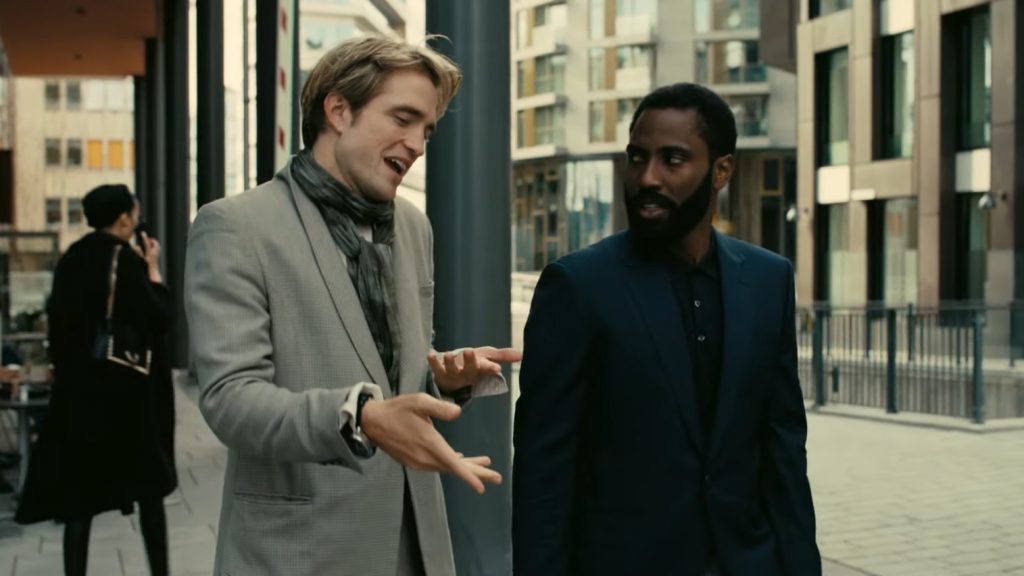
Yes, Neil does eventually die, even though he ends the movie while still alive after the climax.
In a revelatory conversation with the Protagonist, he reveals that he will be reliving the final battle just to make sure everything goes to plan (this is part of the bigger temporal pincer movement). During the big climactic battle at Stalsk-12, a masked member of the Blue team (inversed) takes a bullet for the Protagonist and then unlocks the gate to the Algorithm. Those events actually happen the other way around (unlock gate; take bullet to head) from that person’s perspective (since he was inverted).
That masked person is, of course, Neil, as revealed by his backpack’s orange string (the very same one the Protagonist notices on the person who took the bullet for him and unlocked the gate earlier). It is a bittersweet and heartbreaking ending, as it is Neil’s sacrifice that ultimately allows Tenet to obtain the Algorithm and stop the end of the world.
The Protagonist is unable to stop him, as to do so would essentially undo what’s happened. In the words of Neil himself, “What’s happened, happened”. What has happened will happen.
Neil also confirms that a future version of the Protagonist will recruit a younger Neil in the future and that this is simply the beginning of their relationship together (and also their end, from his perspective, since he will be dying).

Yes, there are two versions of Kat at the end of the movie.
There’s the past Kat – the one who we see approaching the boat and who will go on to experience the events of the movie.
However, future Kat is the one who kills Sator at the end and jumps from the boat. It’s no explicitly explained in the movie, but presumably she will have to live in hiding for a while, until the point where the past version of her eventually gets to the point where the events of the movie happens, resulting in only one Kat remaining; future Kat.
It’s a loop, thus future Kat is the one that we see picking up her son from school at the end of the movie, having taken over as the timeline’s only Kat (since the past Kat has now become future Kat, in a way). In the end, there can only be one Kat.
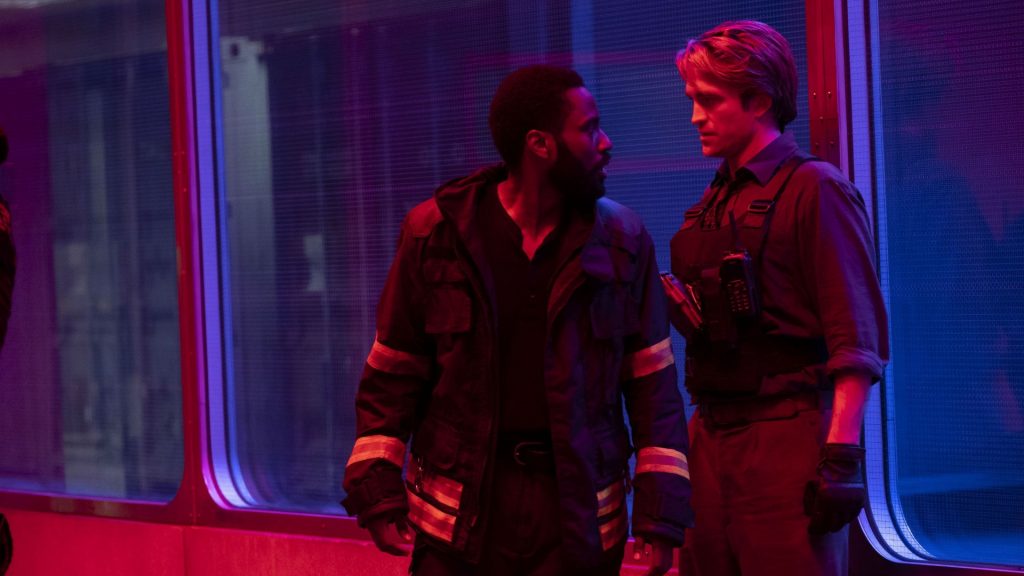
It’s easier to understand Tenet as a whole if you understand that everything that happens in Tenet is bound to happen exactly the way it happened.
In the words of Neil himself, “What’s happened, happened”. What has happened will happen in the way they should or will happen.
The Protagonist must create Tenet and go back in time after the events of the movie to Neil, Priya, Ives, and the others to set the ultimate big temporal pincer movement in motion.
All of this will result in inescapable events. They must and will happen. These include Neil’s death at Stalsk-12, Sator’s role in collecting the Algorithm and becoming the antagonist, and the world will ultimately always be saved.
While each person is bound to end up doing exactly what they are supposed to do, they still need to choose to do those actions. It’s a paradoxical loop.
Another way to phrase is via the Grandfather Paradox (which is mentioned by Neil in the movie). The conundrum is this; by killing your own Grandfather before your Grandfather is able to have a child (your father or mother), you would stop yourself from ever being born. But then, if you’re not born in the first place, how were you be able to go back in time to kill your Grandfather? It’s a paradox with seemingly no answer.
However, technically you’d still be able to kill your Grandfather and still exist. How? Killing your Grandfather after you were born wouldn’t affect your existence, as your younger self would have already existed at that point.
Here’s another way of looking at the paradox: it’s a simple chicken and egg scenario. If the future Protagonist is the one who is the catalyst for the past Protagonist to save the world, then the question becomes; which happened first?
Did the original version of the past protagonist go through the events of Tenet without the future Protagonist’s help, or was the future Protagonist always there to help him? Again, it’s a paradox and a loop.
Just like the Grandfather Paradox, the answer is simple. The actions of the past Protagonist is always spurred by the future Protagonist, and there is just no version where the future Protagonist didn’t put things into motion.
Why is it a loop? There are always multiple Protagonists simultaneously throughout the events of Tenet, which means that the plans of the future Protagonist is always in motion in a never-ending and unbreakable loop.
I hope my answers have cleared up some of the lingering questions from the movie. Most of it is based on my understanding of the movie, and there are potentially a limitless number of different interpretations out there. That’s the beauty of movies like Tenet. The only right answers can only possibly come from Nolan himself.
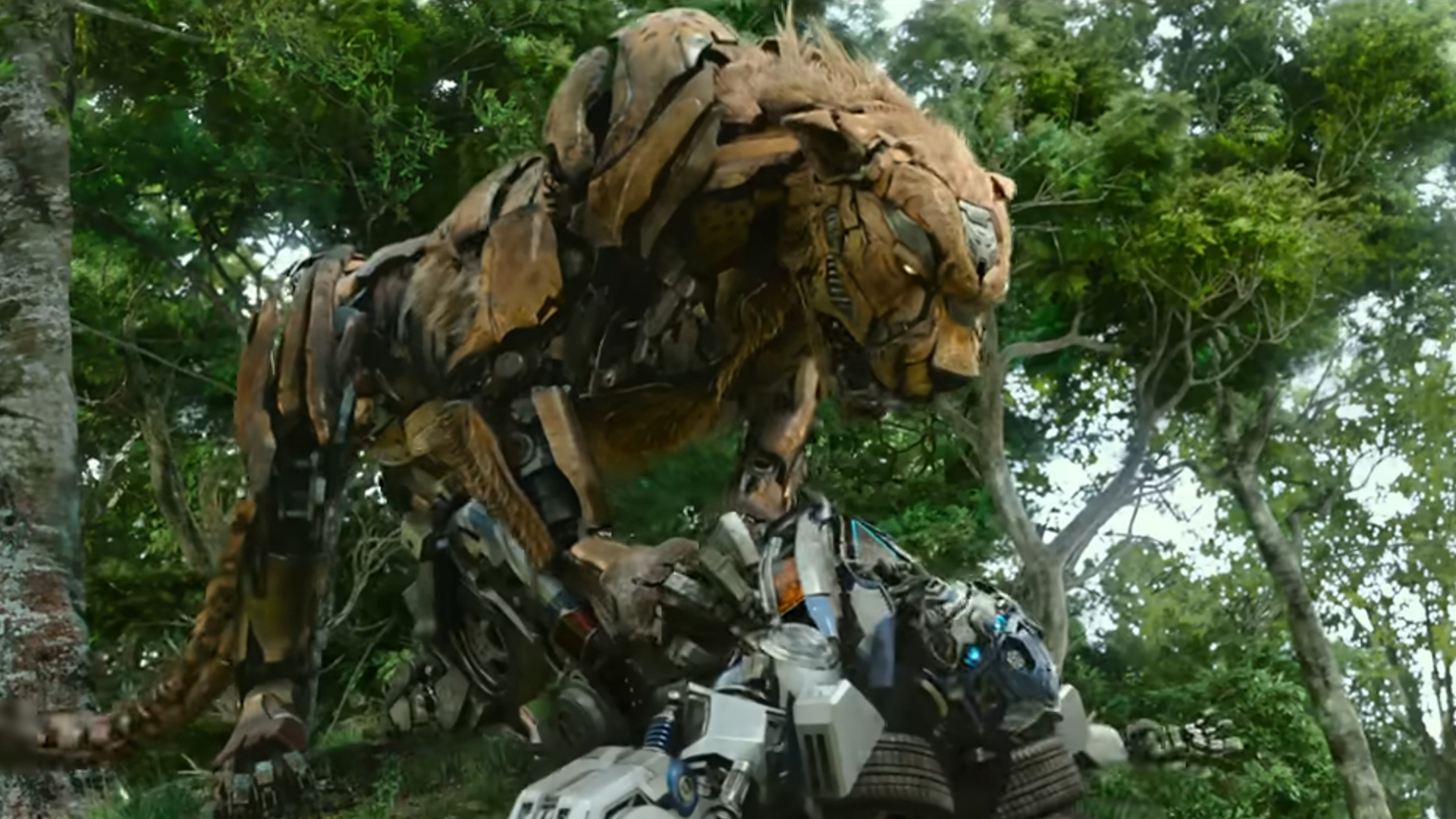
By Alleef Ashaari|May 8, 2023
United International Pictures Malaysia has unveiled a special new clip from the upcoming Transformers Rise Of The Beasts. It features the first mee...

By Xandria Morden|July 11, 2023
We're almost at that time for high-level Apex Legends play; Split 2 Playoffs, baby! Teams from all over the world have been hard at work scrimming ...
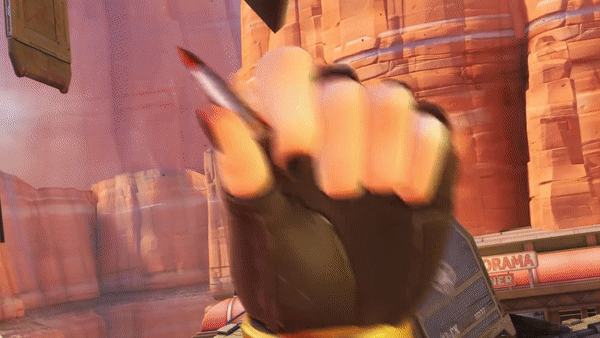
By megikari|November 3, 2018
You've seen her in the BlizzCon 2018 opening ceremony during the Overwatch segment. Now let's take a deep look at Elizabeth Caledonia "Calamity" Ashe,...

By Mr Toffee|February 2, 2024

By Team KKP|July 1, 2023

By Alleef Ashaari|August 2, 2021
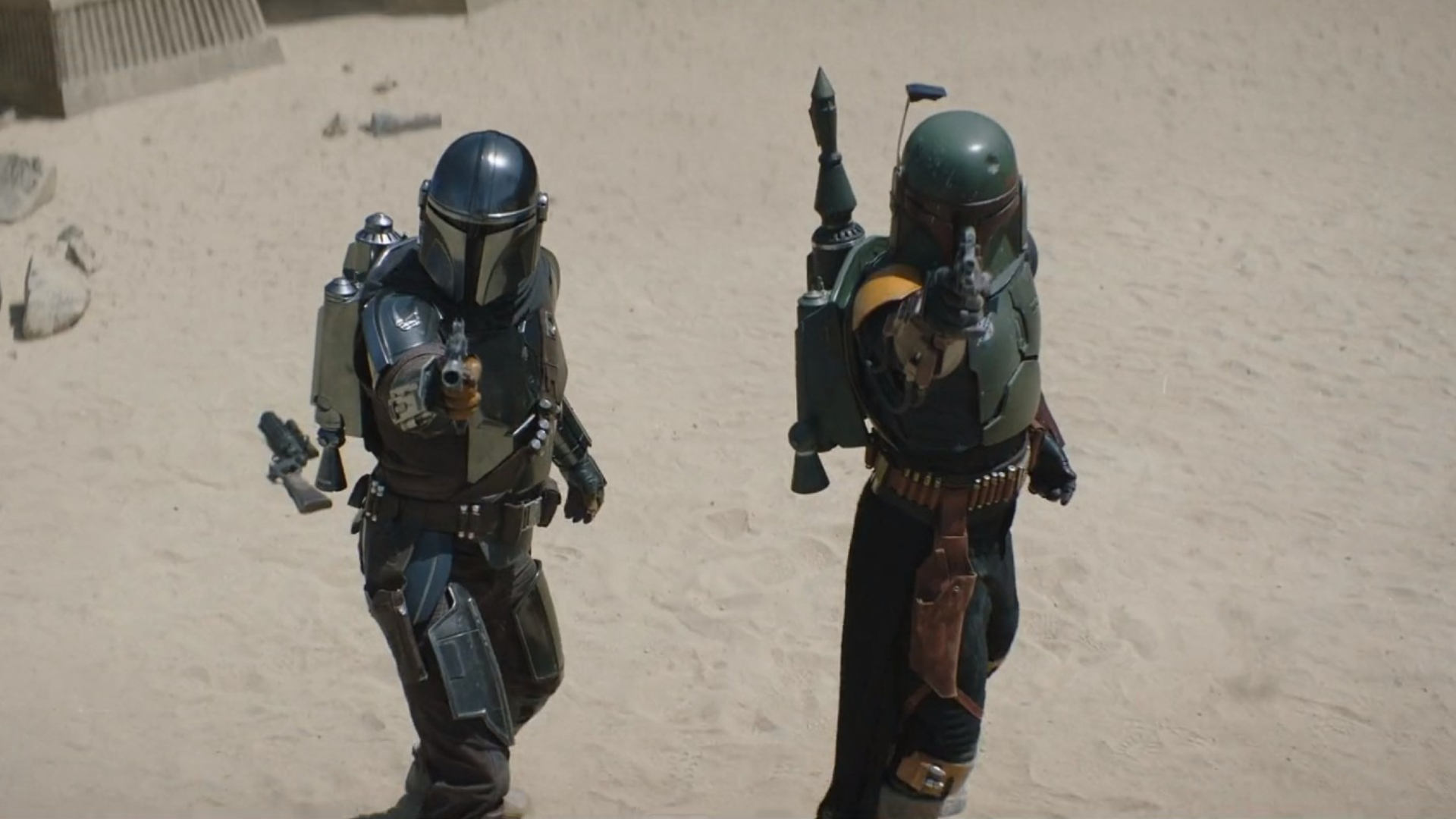
By Alleef Ashaari|February 9, 2022

By Mr Toffee|February 2, 2024

By Team KKP|July 1, 2023

By Mr Toffee|February 2, 2024

By Team KKP|July 1, 2023
Copyright @ Kakuchopurei 2024